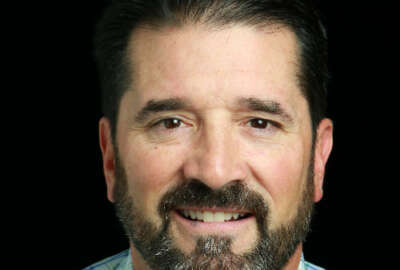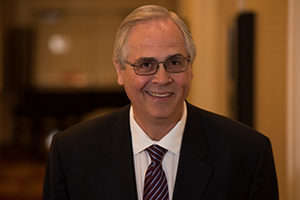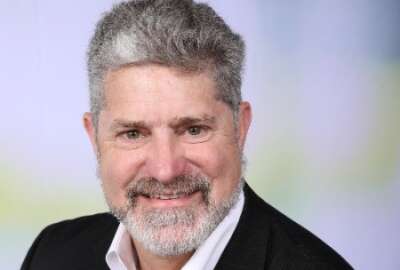Assad, Ginman look to cut costs in new DoD roles
Shay Assad, the Defense Department\'s director of defense pricing, and Dick Ginman, the Pentagon\'s director of defense procurement and acquisition policy, join...
wfedstaff | June 4, 2015 6:56 am
By Suzanne Kubota
Senior Internet Editor
Federal News Radio
The Department of Defense has a new plan to cut an announced $400 billion from the bottom line over the next 12 years. Called the “Better Buying Power” initiative, the “23-point strategy seeks to restore affordability in defense procurement and to improve defense industry productivity,” said Under Secretary of Defense for Acquisition, Technology & Logistics, Dr. Ashton Carter.
Under Better Buying, the role of the office of Defense Procurement and Acquisition Policy (DPAP) has grown to the point where it’s now created a new position, the director of defense pricing.
The new director, Shay Assad, appearing on Off the Shelf, told host Roger Waldron he’s “very excited about this because there are a number of things that we’re doing to improve the capability of the workforce and the capability of the department as it relates to the price we pay for the goods and services we buy and increasing the value to the taxpayers for every dollar that we’re spending on their behalf.”
As Assad assumes the duties of the new position, Dick Ginman has taken over Assad’s former position as the director of Defense procurement and acquisition policy.
“Fundamentally, what’s happening Roger, is that I will be focused on cost, price and finance aspects of acquisition as well as supporting programs….through the Defense Acquisition Board. And in addition, I’ll be responsible for advising Dr. Carter on acquisition strategies for multi-years and things of that nature. And finally, the workforce, which has been my passion, so I will continue to carry through on that.”
Ginman, said Assad, will be responsible for contingency contracting, e-business, and for the acquisition regulation side of DPAP.
In terms of policy, Assad will be advising Dr. Carter on pricing and profit policies and while Ginman will be advising on “all other matters related to acquisition contracting policy.”
Now that they’ve defined who will be handling what, the bigger questions would include how the initiatives work, and how they should work.
Assad explained, going even a step further, and considered how the initiatives should not work.
“The Better Buying Power initiatives are not at all a war on profitability of contractors. That’s not what this is about. What it’s all about is trying to understand how can we use profit to properly motivate contractors to reduce the prices that we pay,” he said.
For example, said Assad, “if we’re paying $100 for a product and included in that $100 is $10 of profit, we’d much rather pay $90 and if the contractor made $15 as a result of that, we’d be okay with that.”
At the bottom line, said Assad, is the bottom line. “What we’re doing is we’re trying to align profitability and performance.”
The area with the greatest potential for savings, according to Assad, is at the beginning of the acquisition process and in more clearly defining the requirements for contracts. “If we’re going to make a quantum leap in improving what we pay for goods and services, it’s going to be in this particular area.”
Communication with industry is an incredibly powerful, but intimidating tool, for contracting officers. Acquisition officers are generally uncomfortable sharing information with industry, not wanting to give the appearance of favoring any one contractor over others. Learning how to communicate, and why it’s important, is a priority for Assad.
“We’re really spending a lot of time with our contracting officers, encouraging them to spend time discussing the requirement with contractors; that there’s nothing inappropriate about it. That the better that contractors understand our requirement, the more precise we are and exacting about what we want, the better proposals and the better competition we’re going to get.”
Changing the acquisition workforce, from tooth to tail, in Defense has been one of Assad’s greatest challenges and satisfactions so far. He said about 8,600 people have been brought on board, with “another 4 or 5 thousand folks we’re going to hire.”
Frank Anderson, the former president of Defense Acquisition University and myself are kind of the key guys behind ensuring that we develop that acquisition strategy and what feels so good about it is that we’re seeing it come to fruition. I’m very excited about it because we’re not just hiring younger folks or folks with little experience. The reality is, Roger, the breakout is about 65 percent entry level folks, about 34 percent journeyman level and then one percent very senior folks, and that was kind of how we set it up. And we’re within one percent of the 65 and one percent of the 34 of getting to where we wanted to be, so we’re pretty excited that we’re, in fact, filling in the workforce with a good mix of folks.
Overall, Assad said the Better Buying initiatives are one of the biggest changes for good he’s seen in his career. “That was a statement from a senior leader that I think will have a profound impact on how we buy goods and services throughout the department.”
For more from Shay Assad and Dick Ginman, you can hear the entire Off the Shelf program by clicking on the audio player at the top of this page.
This story is part of Federal News Radio’s daily DoD Report. For more defense news, click here.
Copyright © 2025 Federal News Network. All rights reserved. This website is not intended for users located within the European Economic Area.







